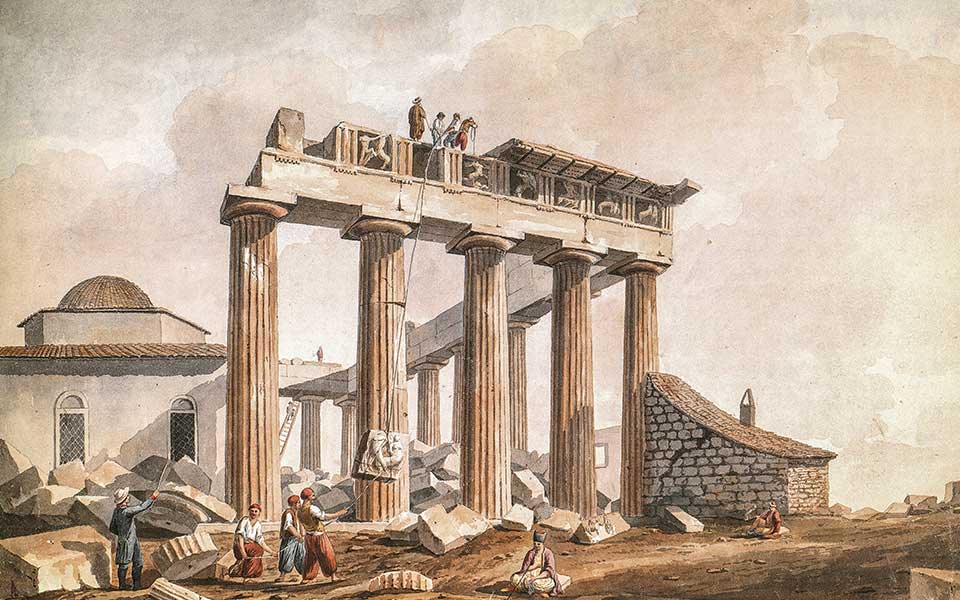The controversy surrounding the Parthenon Marbles, the world’s longest running restitution dispute, revolves around the removal and ownership of Classical Greek sculptures from the Parthenon and other monuments on the Acropolis of Athens. In the early 19th century, Scottish diplomat Thomas Bruce, 7th Earl of Elgin, acquired a significant portion of these sculptures while serving as the British Ambassador to the Ottoman empire. Citing concerns for their preservation, Elgin claimed to have been given permission from the then ruling Ottoman authorities to remove the sculptures from Athens and transport them to England.
From 1801 to 1812, Lord Elgin’s agents removed boatloads of ancient sculptures, the majority created in the 5th century BC under the supervision of master sculptor and architect, Pheidias. The pride of the collection was the Parthenon Marbles, stripped from the 2,500-year-old temple of Athena Parthenos (the “Virgin”), the crown jewel of the Golden Age of Athens. These included about a half (some 75m) of the surviving frieze that once ran around the four sides of the building, 17 life-sized marble figures from its triangular pediments, and 15 of the 92 “metopes,” sculptured panels that were displayed above the columns. Acquired by the British Museum in 1816, these priceless artifacts have been on permanent display in London for over 200 years.
But what were Lord Elgin’s motives for removing the Parthenon sculptures in the first place? Was he a savior, a committed Philhellene genuinely motivated by a desire to rescue Phiedias’ sculptures from further deterioration or potential destruction? Or was he a self-serving aristocrat, who stole priceless artworks to decorate his ancestral home in Scotland?
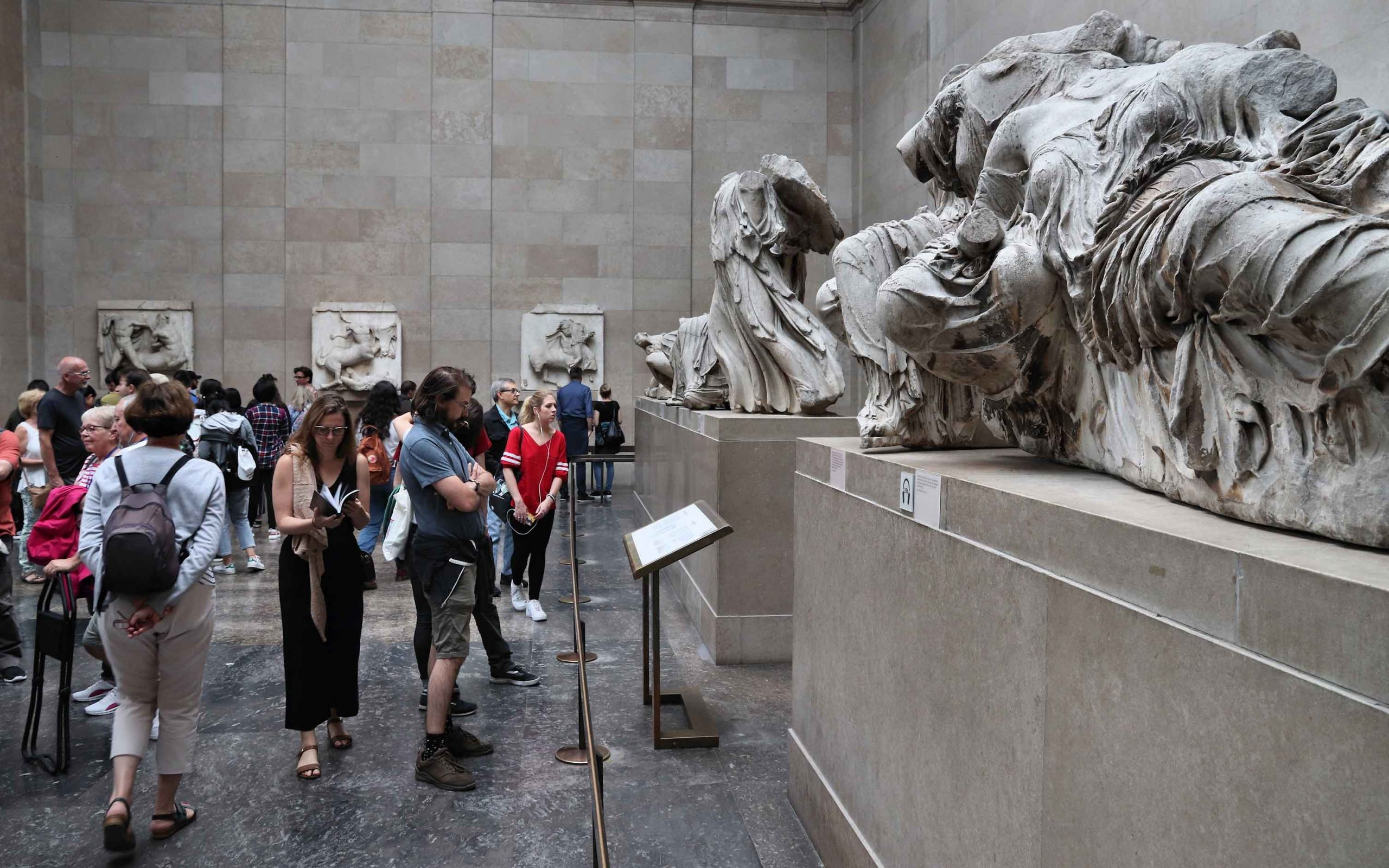
© Shutterstock
Why is this issue important?
The ongoing controversy surrounding the removal of the Parthenon Marbles, often referred to in the United Kingdom as the “Elgin Marbles,” stems from questions of legality, ethics, and cultural heritage, with critics arguing that Elgin’s actions were unauthorized, and the artifacts were effectively looted. Since the formation of the modern nation state of Greece in 1832, successive Greek governments have repeatedly sought the return of the sculptures, contending that they are a crucial part of the country’s cultural heritage and identity. On the other side of the debate, supporters of the British Museum’s claims of ownership emphasize the role of Lord Elgin in preserving the priceless artifacts and making them accessible to a broader audience.
Two centuries on from Elgin’s controversial actions, the long-running dispute remains a useful case study in the complexities of cultural ownership, encapsulating broader discussions about the repatriation of cultural artifacts and the ethical implications of removing artworks from their place of origin, notably during times of war, occupation, and colonization.
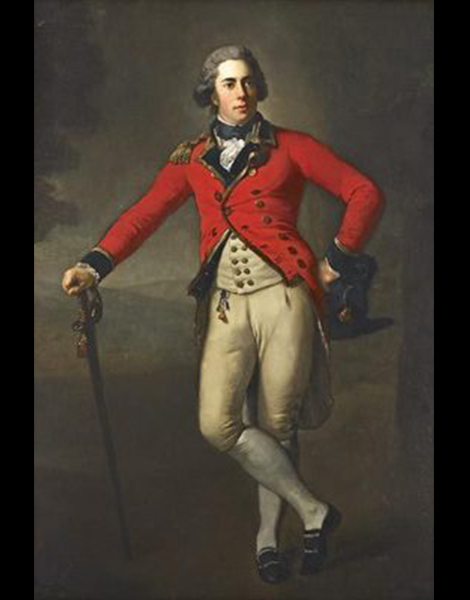
© Alamy / visualhellas.gr
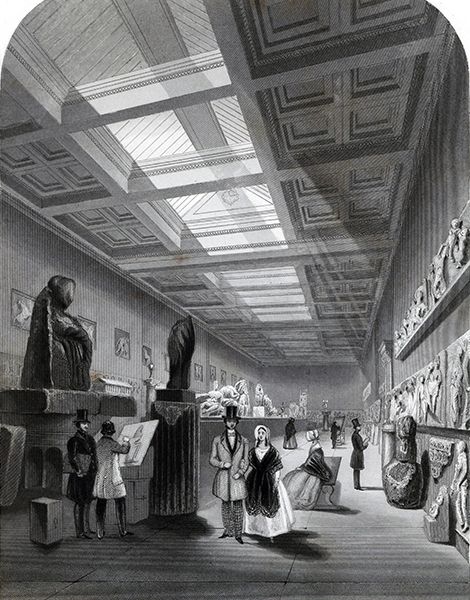
© AFP / visualhellas.gr
Who was Lord Elgin?
Thomas Bruce, 7th Earl of Elgin, was born on July 20, 1766, in Broomhall, Fife, on the east coast of Scotland. He hailed from a prominent family of Scottish nobles, a member of the formerly royal house of Bruce (the famous Clan of Robert the Bruce) and boasted strong political and military connections. Like many young aristocrats of the age, he received his formal education at Harrow School and Westminster, and went on to university at St Andrews in Scotland before heading to the continent, where he studied international law at Paris.
When he completed his education, the young Lord Elgin purchased an officer’s commission in the British Army in 1785, first serving as an ensign (junior officer) in the prestigious Third Regiment of Foot Guards, the forerunner of the Scots Guards, later transferring to the 65th Regiment of Foot in 1789. Despite reaching the rank of lieutenant general in 1814 and serving on the continent at the height of the Napoleonic Wars with France, Elgin did not have his sights on a military career. Instead, his chief attention was Great Britain’s rapidly expanding diplomatic service, the perfect career for a man with all the right social and political connections.
In 1790, at the age of 24, Elgin was elected as a Scottish Representative Peer for Dumbartonshire, which required him to attend Parliament in Westminster whenever his military duties allowed. In the following years, Elgin held various political and diplomatic positions, steadily rising the ranks. In 1792, he was appointed British envoy-extraordinary in Brussels, and then in Prussia in 1795, where he gained valuable experience during an intense period of geopolitical activity following the annexation of the Austrian Netherlands by the newly formed French Republic.
But it was during his time in Athens and Constantinople (Istanbul), as ambassador to the Sublime Porte of the Ottoman empire from 1799 to 1803, that Elgin would leave his controversial mark on history.
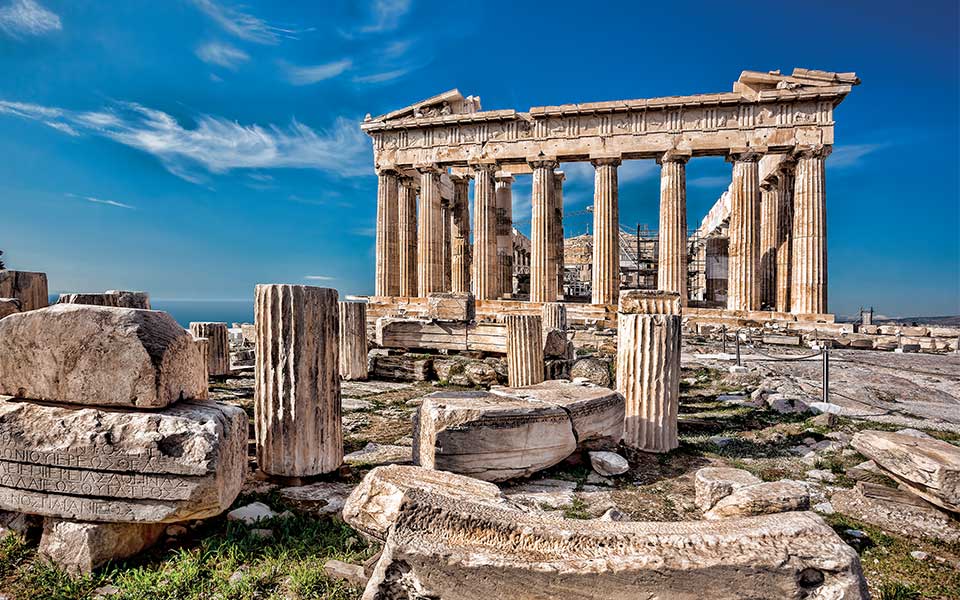
© Shutterstock
The Parthenon in 1800
When Elgin arrived in Athens at the turn of the 19th century, it was a ramshackle city of some 10,000 inhabitants. The Parthenon had endured over a millennium and a half of damage and near constant alteration. The deliberate removal of the monument’s decorative sculptures can be traced back to the late 5th century, during its conversion to a church in the early Christian period. Under Latin rule (1205-1458), it became a Roman Catholic church of Our Lady, and a large bell tower with a spiral staircase was erected in the southwest corner of the cella (inner chamber). It was subsequently converted into a mosque during the early Ottoman period, the bell tower extended upwards and turned into a minaret.
By far the most extensive damage to the monument took place on the night of September 26, 1687. During the Morean War (1684–1699), Venetian forces, under the command of Francesco Morosini, marched on Athens and besieged the Acropolis, then an Ottoman stronghold. On that ill-fated night, a Venetian mortar shell fired from nearby Filopappos Hill struck the Parthenon and ignited the gunpowder magazine that was being stored inside.
The sheer force of the explosion split the ancient temple in two, destroying the roof and central part of the building, and reduced the large sections of the cella walls to rubble. Three-fifths of the sculptures from the frieze and metopes crashed to the ground while 14 columns from the north and south peristyles collapsed. The explosion showered marble fragments over a wide area, destroying homes clustered around the slopes of the Acropolis, and killing nearly 300 people.
Over the following century, large marble fragments from the partially destroyed Parthenon were recycled as building material for the renovated Ottoman garrison. Surviving pieces of the decorative sculpture were openly sold to travelling Europeans, fascinated by the art and architecture of Classical Greece – hence the scattering of pieces of Parthenon sculpture around European museum collections, from Copenhagen to the Vatican.
Now in his mid-30s, Elgin was a seasoned diplomat. Over the course of his travels, he had developed an insatiable appetite for Classical antiquities, fuelled by the growing popularity of Neoclassicism, especially in Britain and France. This desire for Greek-inspired art and authentic Greek antiquities in European high society goes some way to explaining Elgin’s preoccupation with the Parthenon and its decorative sculptures, the pinnacle of ancient Greek art.
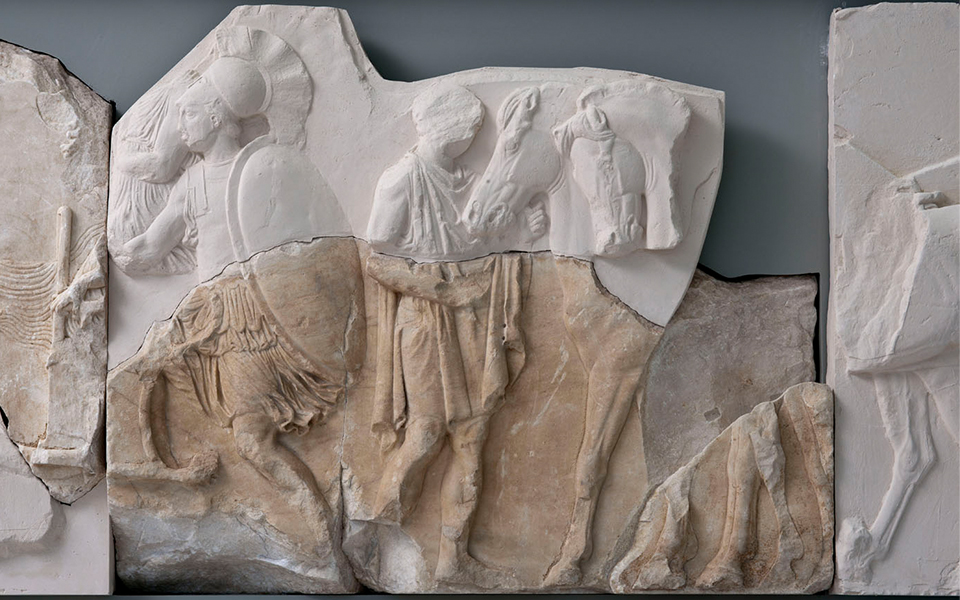
© Acropolis Museum, 2012, photo: Socratis Mavrommatis
Removing the sculptures
In May 1801, Elgin claimed to have obtained an official permit (“firman”) from the sultan, allowing him to erect scaffolding, draw and make plaster molds of the sculptures, but was unable to produce the original document for the officials in Athens. An Italian transcript of this document still exists in the archives of the British Museum, but its authenticity as a copy of an official firman has been questioned by experts on the diplomatic language used by Ottoman authorities of the period. The wording of the document, not altogether clear, granted Elgin permission to “take away some [or ‘a few’] pieces of stone with old inscriptions or figures thereon, that no opposition be made thereto.”
A landmark 1967 study by British historian William St Clair, “Lord Elgin and the Marbles,” concluded that the sultan likely meant the removal of artefacts that had fallen to the ground and/or been found in excavations at the site, not the artworks still adorning the temples. Nevertheless, in Elgin’s view, it amounted to official permission to remove the sculptures from the Parthenon itself.
From 1801 to 1804, Elgin and his associates not only stripped the remaining decorative sculptures from the Parthenon, but they also removed one whole Caryatid (sculpted female figure serving as a column) from the veranda-like porch of the Erechtheion, four slabs from the parapet frieze of the Temple of Athena Nike, and other pieces from the Propylaea. In all, Elgin oversaw the removal of more than half of the surviving sculptures from the Parthenon, either hacked off or simply sawn into smaller pieces for ease of shipping, causing irreparable damage in the process.
Once removed, the Marbles were transported from Athens to the port of Piraeus, where they were shipped to Britain, where they were later sold to the British Museum.
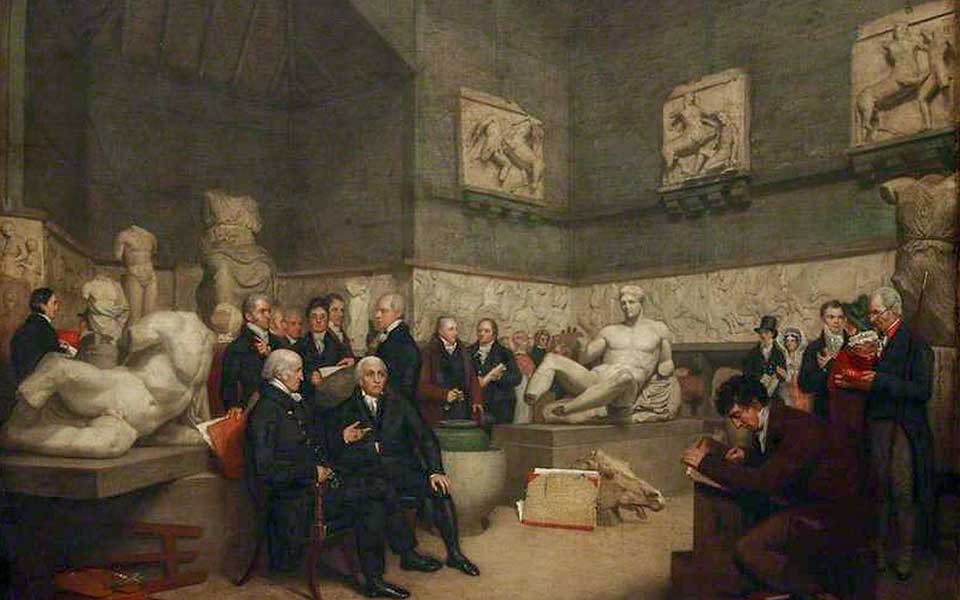
© The Trustees of the British Museum
Elgin as a Philhellene?
Supporters of Lord Elgin’s actions have long argued that he played a crucial role in preserving the sculptures from further deterioration and potential destruction. His removal of the Marbles, and their subsequent transportation to Britain, not only helped protect the artworks but made them accessible to a wider audience.
While Elgin’s actions were controversial to some of his contemporaries, including the English poet and philhellene Lord Byron (1788-1824), who died in the armed struggle for Greek independence, others greatly admired the sculptures and supported their display in London, attracting huge numbers of visitors.
Romantic poet John Keats (1795-1821) penned a sonnet to celebrate “Seeing the Elgin Marbles” in the British Museum, while German writer JW Goethe (1749-1832) hailed their acquisition as “the beginning of a new age of Great Art.” English poet Felicia Hemans (1793-1835) was another keen supporter, and defied Byron in her “Modern Greece: A Poem” (1817) with the question:
And who may grieve that, rescued from their hands,
Spoilers of excellence and foes of art,
Thy relics, Athens! borne to other lands
Claim homage still to thee from every heart?
It is also important to scrutinize the artifacts’ profound influence on the aesthetic of Western art and architecture. Supporters of Elgin argue that the sculptures were brought to world renown when placed on display at the British Museum, where they can still be seen for free (compared to the fee-charging Acropolis Museum in Athens).
For the art historian John Boardman, “In Britain they transformed scholarly attitudes to Greek art world-wide and have had more effect in the past 200 years than they did in over 2,000 in Athens.”
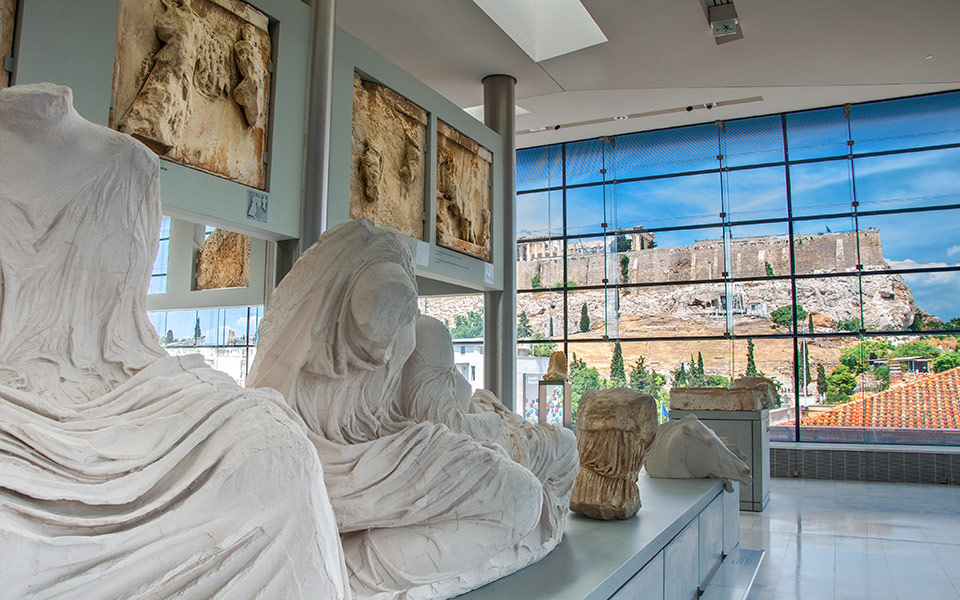
© Shutterstock
Elgin as a Thief?
The removal of the sculptures and their shipment to Britain was finally completed in 1812, at huge personal cost to Elgin. In total, he paid an estimated £75,000, equivalent to nearly £5 million in today’s money.
Elgin’s tenure as the British ambassador to the Sublime Porte certainly would have put him in a unique position to negotiate with the Ottoman authorities. Indeed, Anglo-Ottoman relations at the time were especially close, as the two powers worked in lockstep to drive out Napoleon’s French forces from Ottoman-controlled Egypt. Some scholars argue that he may have taken advantage of the political climate to “stretch” the meaning of the elusive firman and remove sculptures that were still affixed to the monument. According to historian St Clair, “Lord Elgin’s agents, by a mixture of cajolery, bribes and threats, persuaded and bullied the Ottoman authorities in Athens to exceed the terms” of the decree.
Before taking up his post as ambassador to the seat of the Ottoman empire, an appointment that he had enthusiastically lobbied for, Elgin approached British government officials about the acquisition of drawings and plaster casts of surviving sculptures from the Acropolis monuments; a request that was immediately turned down. At the time, he had been overseeing the redesign of Broomhall House, the family home of the Earls of Elgin in Scotland. Chief architect on that project was Thomas Harrison, an admirer of Classical Greek architecture, who encouraged Elgin to use his elevated position in the diplomatic service to bring back drawings and casts to be used to influence the design and aesthetic of the country house.
While there is some evidence to suggest that that he intended for the sculptures to adorn Broomhall, others, including renowned Classical art scholar Ian Jenkins (1953-2020), contend that Elgin had plans to establish a private museum. Whatever his motives, a costly divorce from his wife, Mary Nisbet, in 1808 forced him to seek buyers for the sculptures to settle his debts.
Prior to the sale of the Marbles to the British Museum in 1816, a Parliamentary Select Committee launched an investigation into legality of their acquisition. Lord Elgin was cross examined as to whether he had abused his position as ambassador in the pursuit of the sculptures. Intriguingly, he replied that his actions were no different to any other antiquarian of the time, and the Committee voted 82-30 in favor of purchasing them “for the British nation.”

© Shutterstock
Enduring controversy
Lord Elgin’s removal of the Parthenon Marbles from Athens continues to be a subject of historical and cultural scrutiny. His motivations, whether driven by preservation, diplomatic considerations, or personal interests, remain open to debate, with critics arguing that the removal of the sculptures was not only ethically questionable but also caused irreparable damage. Supporters, on the other hand, contend that Elgin’s actions preserved the artifacts, preventing further deterioration and ensuring their accessibility to a global audience.
Where do you stand on Lord Elgin’s removal of the Parthenon Marbles?

